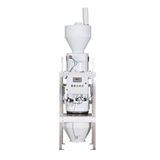The National Demonstration Sites programme has been set up by the Cooperative Research Centre for Contamination Assessment and Remediation of the Environment (CRC CARE) to demonstrate to industry, regulators and the public that effective clean-up is both possible and cost effective with the latest methods.
“In science, you can only do so much in the laboratory. We have to solve real-life problems in the field and show that the new technologies work on a large scale,” explains CRC CARE managing director Professor Ravi Naidu.
“Above all we have to convince industry, government and the community these new methods work – and that they can deliver a safer, healthier Australia,”
Among the methods being pioneered by CRC CARE researchers:
- Proof that ‘natural attenuation’ – the low-cost use of naturally-occurring soil and water microbes to break down hydrocarbon pollution – works in Australian environments
- The world’s largest experiment demonstrating how the impact of acid sulphate soils can be mitigated in a coastal wetland
- A novel patented method to break down the toxic residues of fire-fighting foams that have been used universally for decades
- Showing that many contaminants can be immobilised and managed on site, providing a safe and cost-effective strategy for dealing with the problem
Coupled with these field activities CRC CARE is also collaborating with regulators and industries to assist them develop policies on health screening levels and guidance documents on a number of contaminants.
“We also aim to persuade the public that these methods can deliver a safe, healthy environment for the future, in which they can live and their children can grow up without risk from industrial pollution from the past,” Prof. Naidu says.
“As our cities grow, their suburbs engulf old industrial sites from times past. Our aim is to ensure these are made completely safe for people to live on or near.
“Some of the demonstration sites will involve the wider Australian community, giving them a chance to see these new methods in action and form a judgement about how well they work,” Professor Naidu says. “This will also enable us to develop the best ways of communicating risk to the community.”
“The findings from these experimental programmes will be provided to Environment Protection Authorities and regulators to help them design policies for a safe, healthy Australia based on the latest in clean-up techniques. This should also help to relieve a significant cost-burden on industry.”
At the same time it is expected some of the demonstration sites will result in sharply improved land values - something which usually follows the successful clean-up of formerly contaminated land. “This will be of particular importance in the current climate of depressed land values, as it gives greater value to land that was formerly considered uninhabitable,” he says.
ExxonMobil has made available a site at Port Stanvac in South Australia as a testing ground for new technologies in the assessment and remediation of hydrocarbon contamination.
At another site in the programme, the Queensland Government is taking part in the world-scale remediation of an iconic mangrove wetland at East Trinity, near Cairns. The areas was severely damaged by acid soil runoff triggered by land clearing some decades ago.
Finally, the Australian Institute of Petroleum is jointly sponsoring a portfolio of projects intended to develop an industry-wide approach to site contamination assessment and management, and the development of policies and guidelines based on Australian data and experience. Other participants include the Commonwealth Government and the City of Salisbury, SA.















